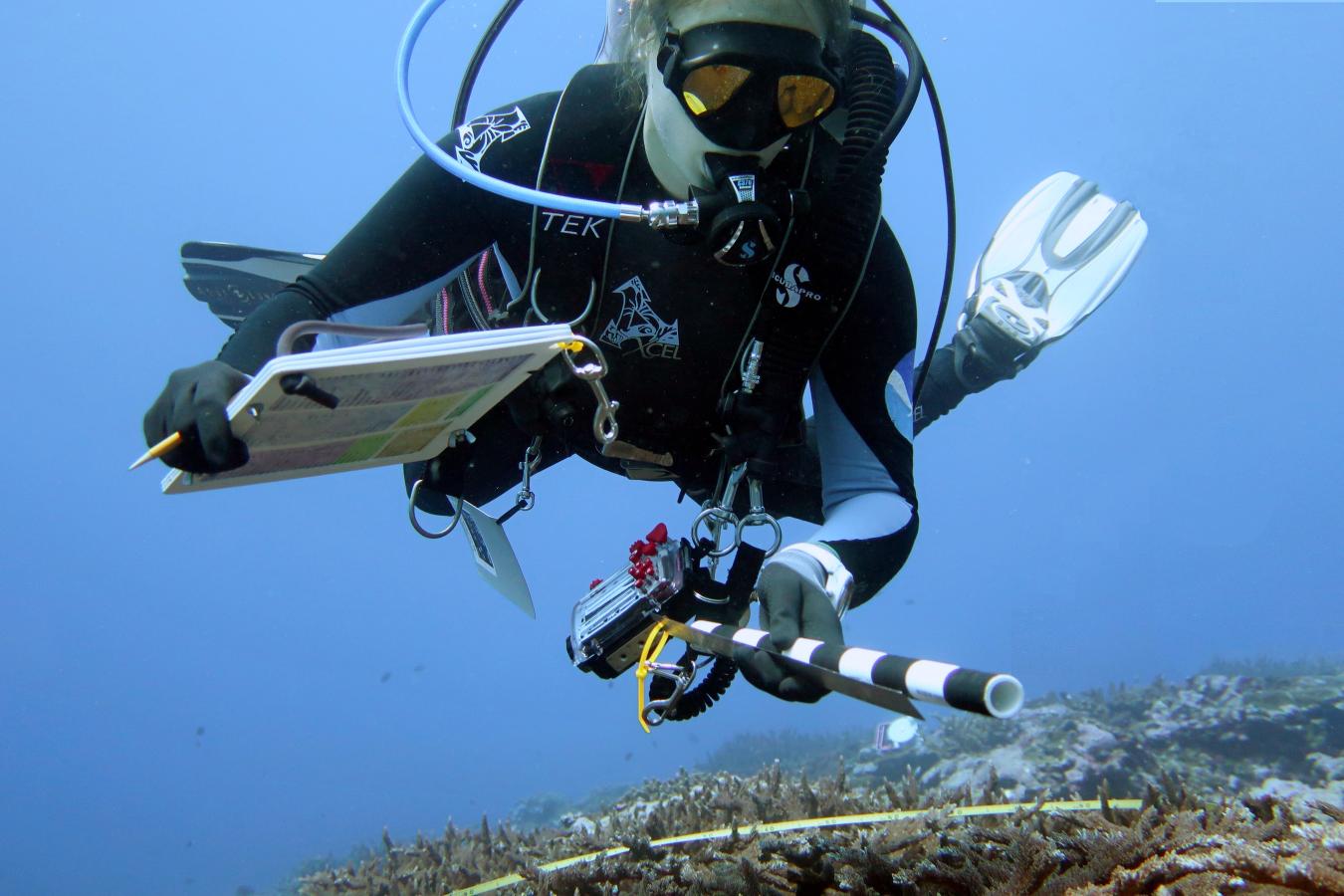
Funny thing….it’s hard to do marine science without going underwater at some point. Missions like the 2023 Rainier Integrates Charting, Hydrography, And Reef Demographics (RICHARD) mission aboard NOAA Ship Rainier are an example of how the NOAA Diving Program supports our shipboard science.
The scientists on the mission worked in American Samoa and the Pacific Remote Island Areas to map the seafloor, take water samples, count fish and assess coral reefs. Much of this type of work requires the scientists to be SCUBA diving in order to get the data they need. This can be a precarious situation when the Rainier is hundreds of miles away from shore.
This is where the NOAA Diving Program comes in. With more than 300 divers, NOAA has more divers than any other U.S. civilian federal agency. Divers from the program are trained specialists who can support diving operations and ensure that they are safely executed. Any researcher working from our ships needs to go through extensive training to become a NOAA diver.
On a typical day of the Rainier mission, two small boats with 10-12 science divers usually did four dives, and each leg of the mission lasted about three weeks. Every day, dive operations started out with a mission briefing led by the divemaster. Since they cannot talk underwater, it is important to make sure everyone is on the same page about the goals of the day’s mission, each person's role, and of course any safety information needed. Then everyone starts loading the small boats with dive gear and any science equipment that will be used that day. The teams were usually away from the ship for 6 hours and then returned to unload, rinse off the gear and get themselves cleaned up before dinner.
There are two different types of divers on board – science divers and the dive support staff. The RICHARD dive support teams are made up of NOAA Corps officers, professional mariners, and diving center staff. While the science divers are underwater working, the divemaster is on the surface monitoring the operations, and is ready to respond in case of a diving emergency. The divemaster is in charge of the operation, so they brief the divers, check all of the divers and their equipment before and after each dive to ensure that they are being safe, monitor communications between the vessel and the dive team while they are underwater, and debrief the divers after the dive. Every NOAA diver is specially trained to respond to emergency situations, but only the divemasters are specifically trained in diving accident prevention and management.
Thanks to our divers adhering to our rigorous training and safety policies, diving incidents are rare; however, if needed, the Rainier had a kind of hyperbaric chamber on it called a Transportable Recompression Chamber System. The system is operated by the on-site chamber supervisor and helps to prevent divers from experiencing decompression sickness and other diving maladies after a diving accident. The chamber supervisors on this mission are also divemasters, making them invaluable during a mission such as RICHARD.
Not every NOAA ship has a hyperbaric chamber aboard. For the RICHARD mission, the chamber system was specially commissioned by the diving program and calibrated for shipboard missions. This included developing the new operating manual. A special course at the diving center was created and conducted in 2021 to show the Rainier diving medical technicians how to run this modular system and treat a patient. During downtime on the ship, the chamber supervisor also conducted safety training and chamber drills for the divers as needed.
Often the photos we see of science diving operations are images of beautiful underwater scenes, but really it’s the work behind the scenes and the pre-mission training that makes the dives safe and successful. If there were no divemaster, chamber, chamber supervisor, or medical technicians, these missions could not take place.
To get a closer look at diving operations and the decompression chamber system, visit the RICHARD photo gallery.
Photo: A NOAA diver counts coral colonies as part of the RICHARD mission in American Samoa. Credit: NOAA Fisheries/Joao Garriques

